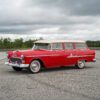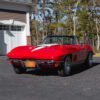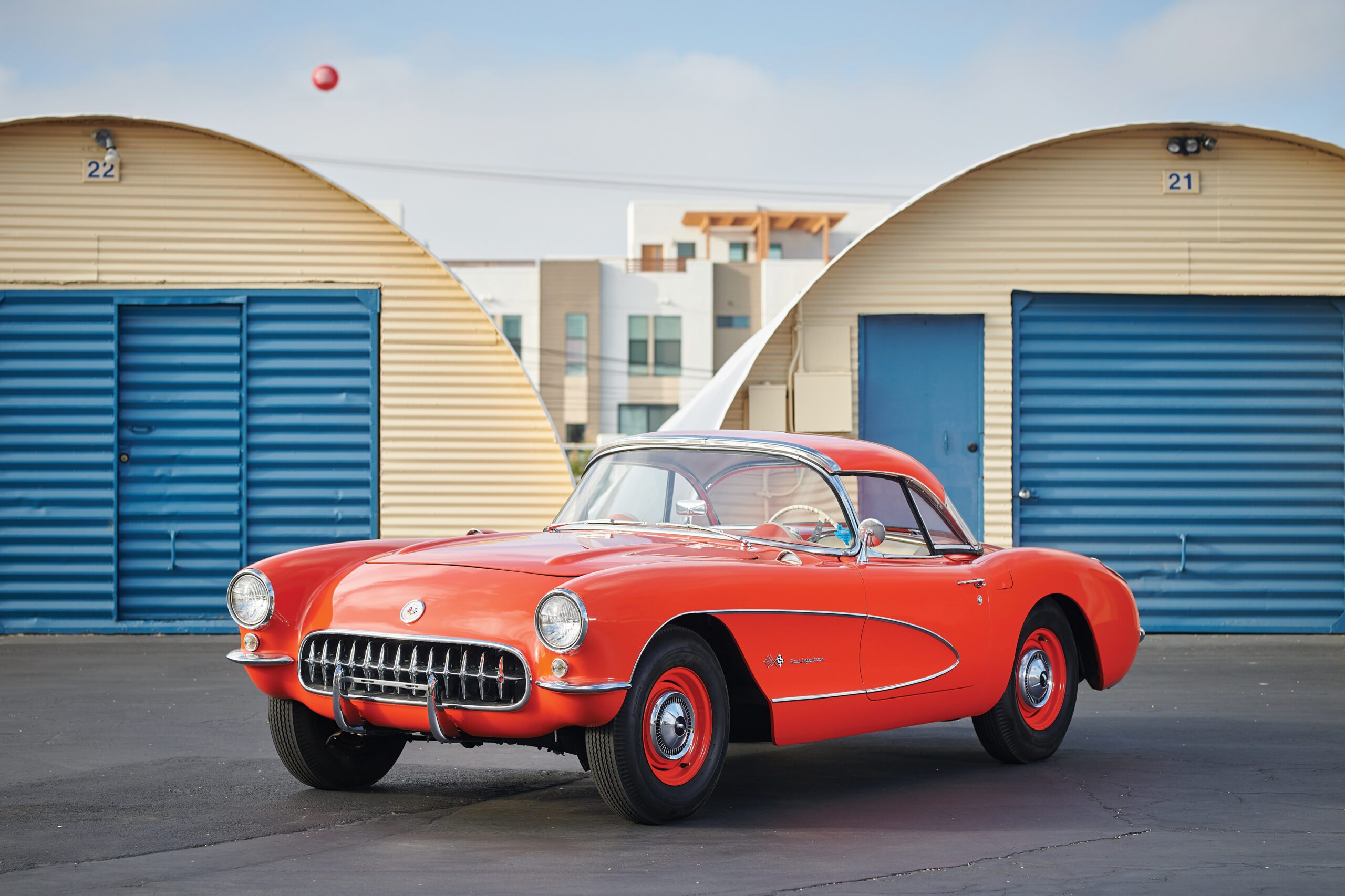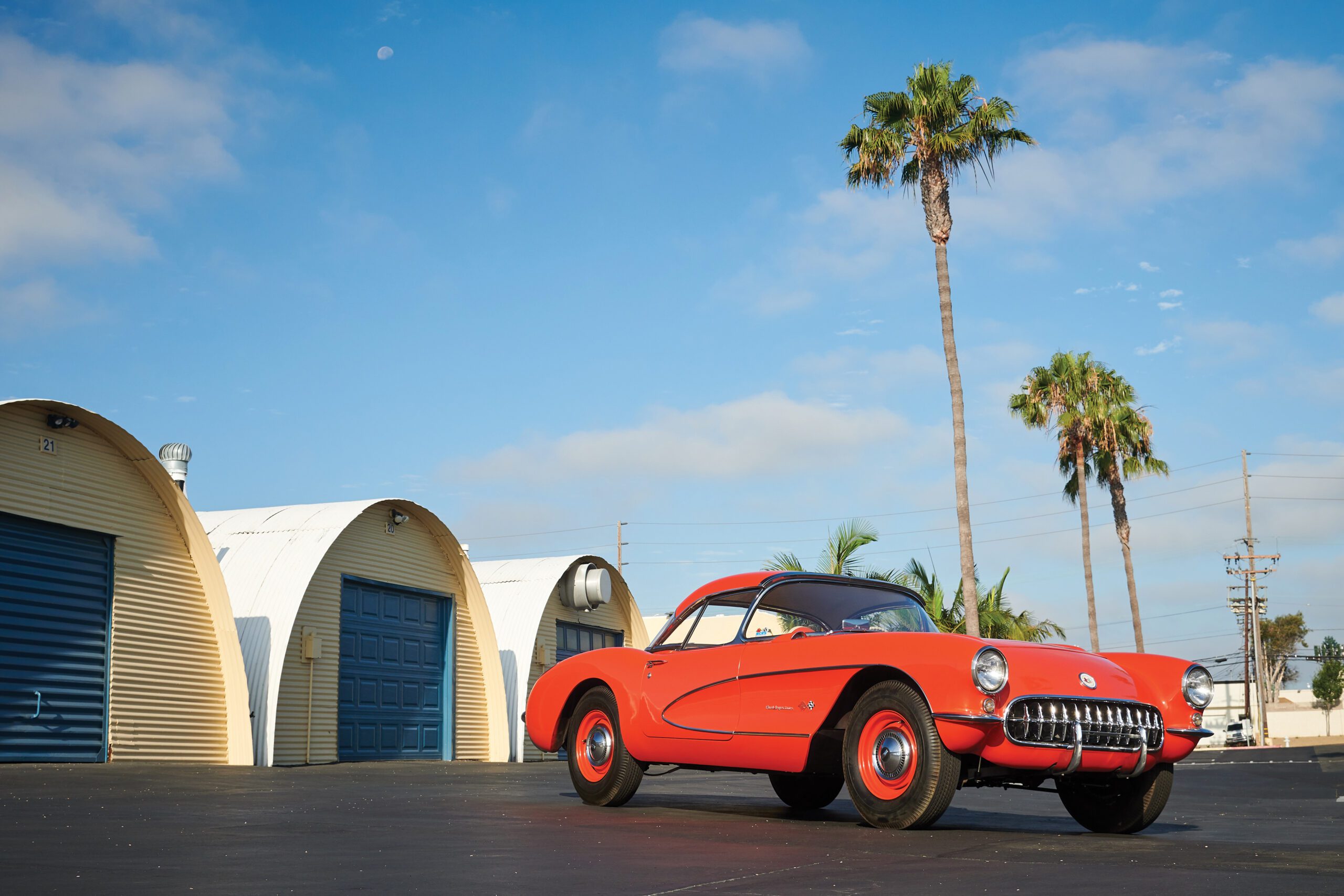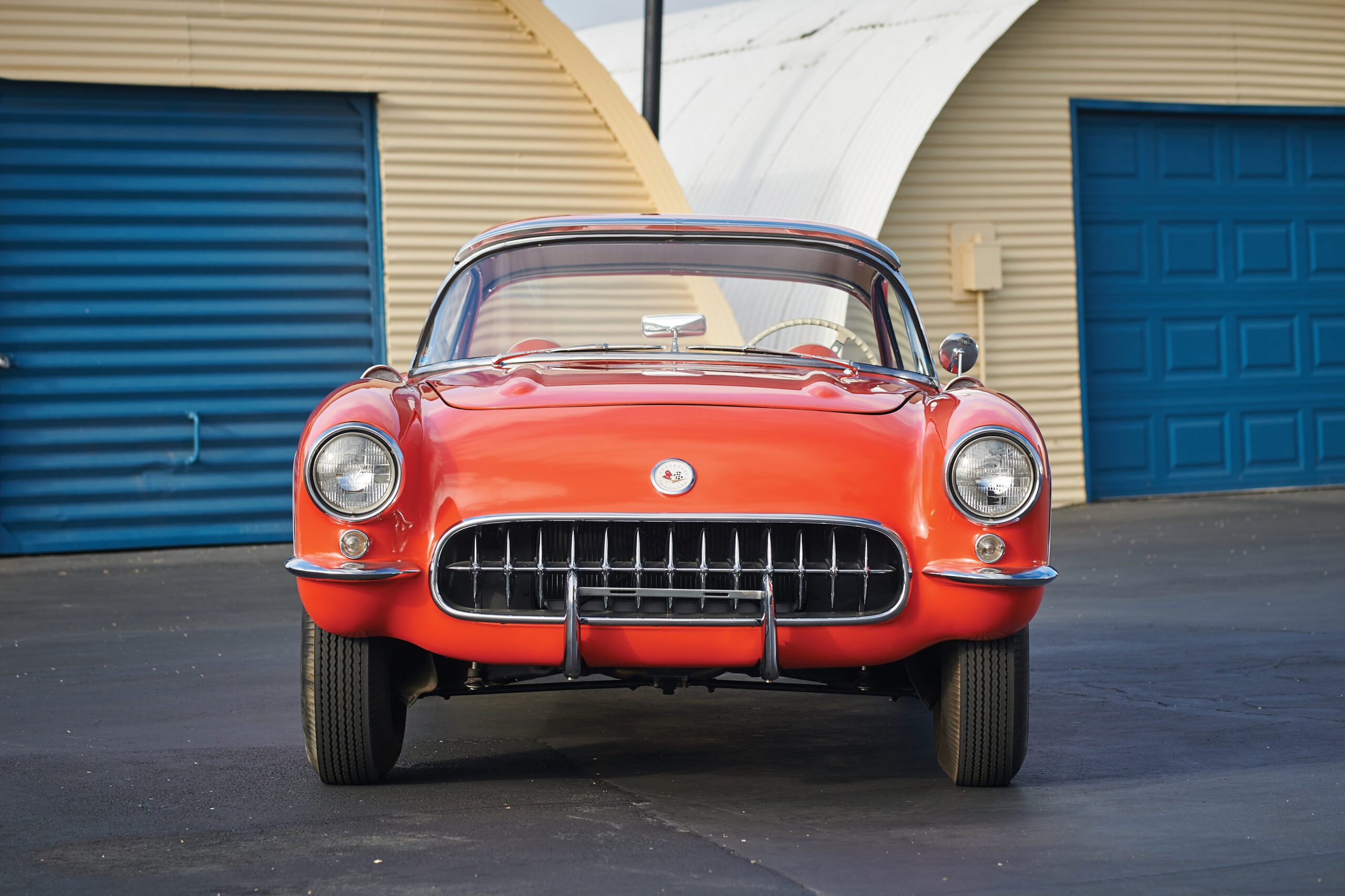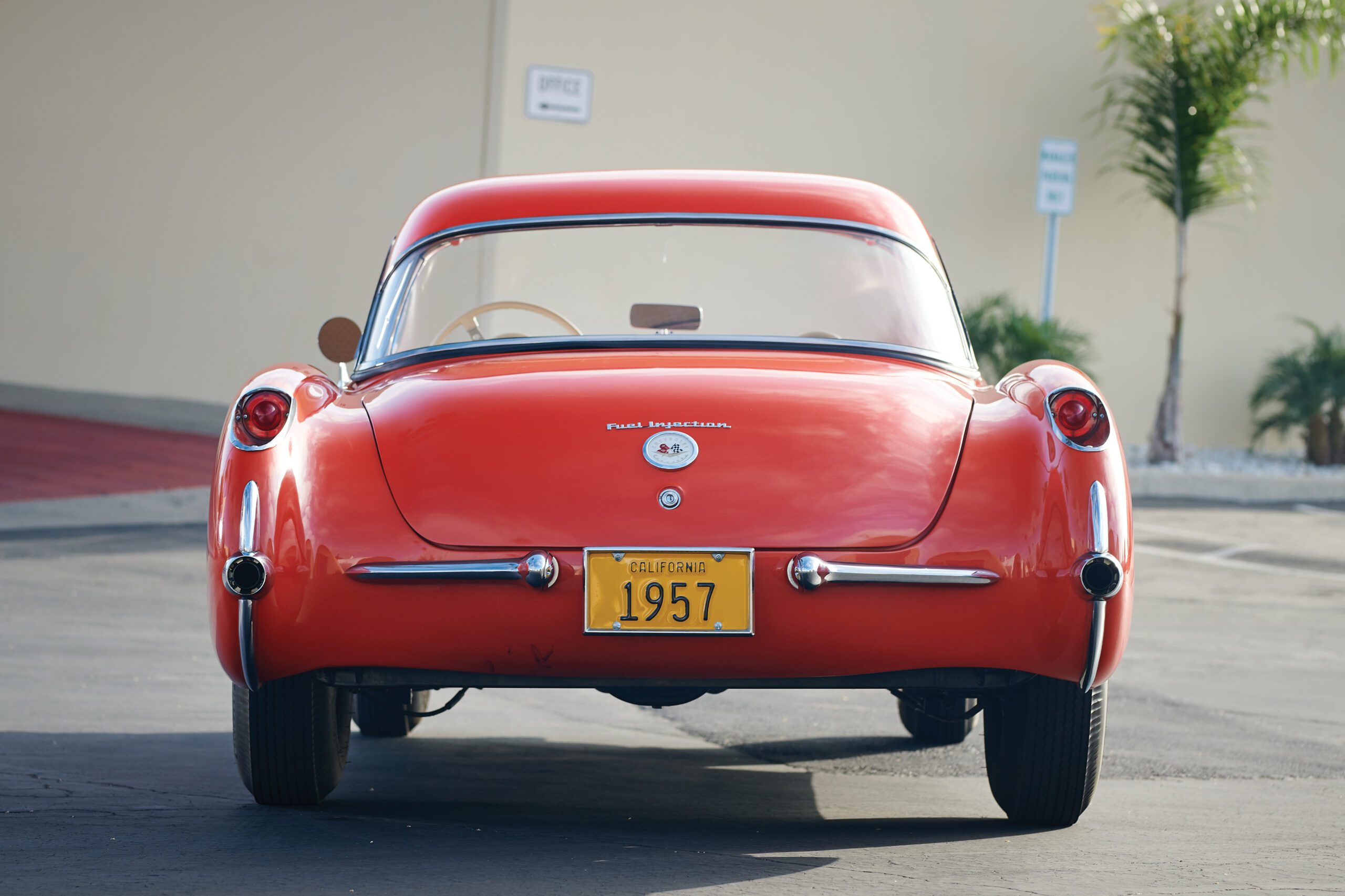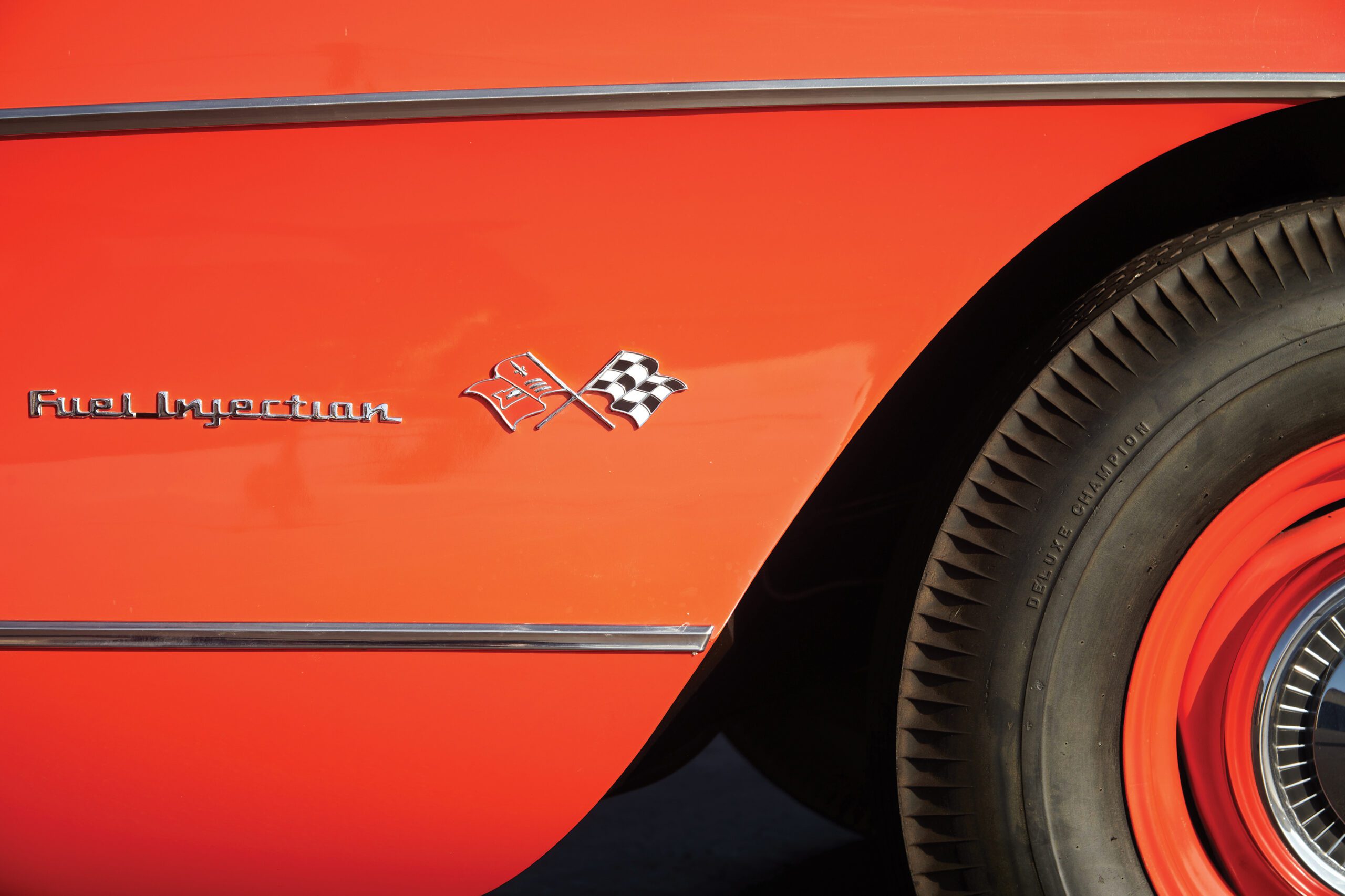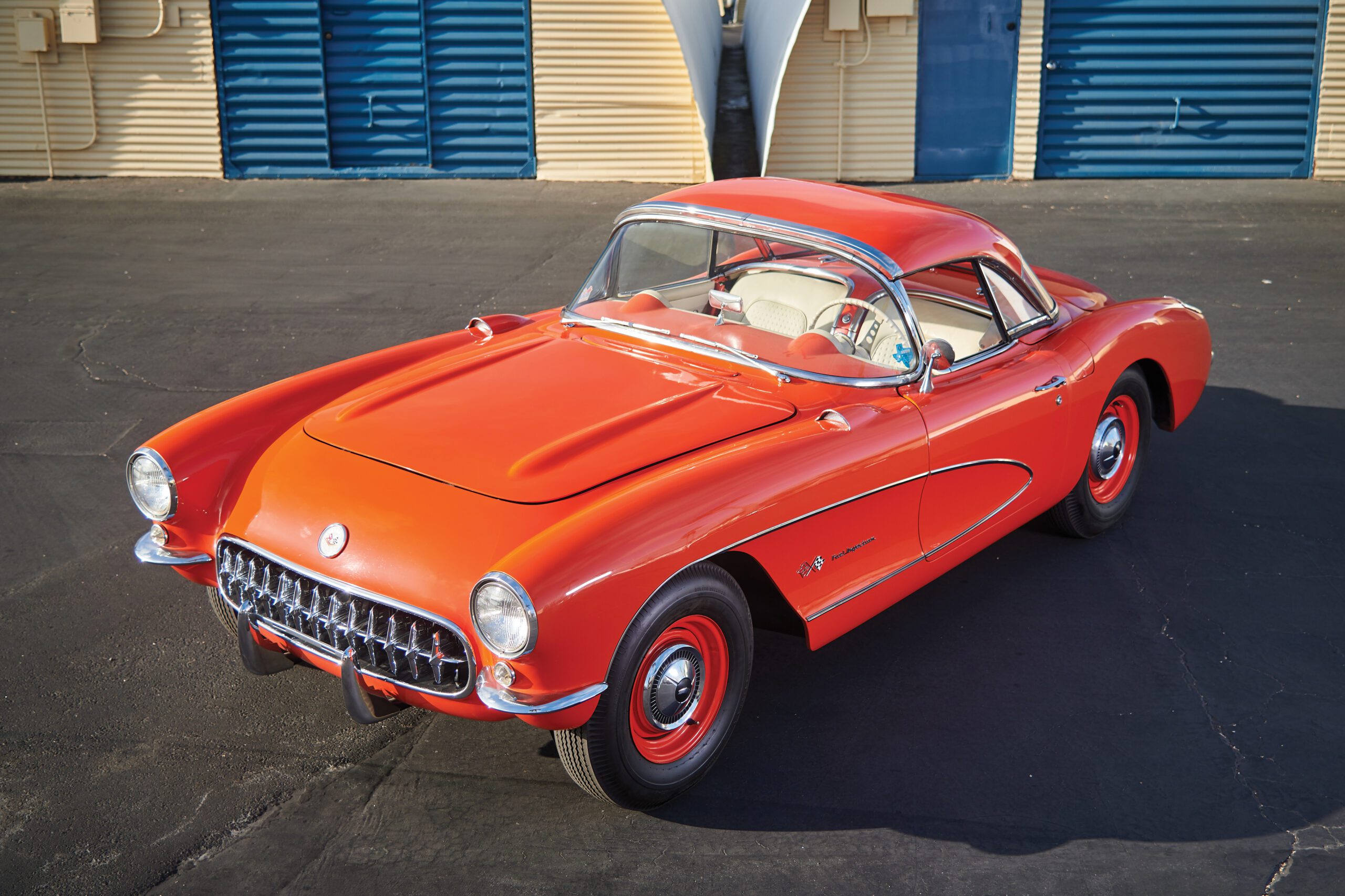In 1955, Chevrolet’s Corvette received a significant boost with the introduction of V-8 power, setting it on a high-performance path. The addition of options like a standard manual transmission in 1956 increased the Corvette’s popularity, as Chief Engineer Zora Arkus-Duntov had predicted. By 1957, sales soared.
In 1957, Arkus-Duntov, with engineer John Dolza, introduced the Rochester Ramjet fuel-injection system. This innovation allowed the Corvette’s engine to produce 283 horsepower from 283 cubic inches of displacement, a first for American production cars.
This fuel-injected engine empowered the Corvette to dominate American SCCA racing and compete internationally. Its superiority in SCCA B Production racing continued through the early 1960s, culminating in a class victory at the 1960 24 Hours of Le Mans with Team Cunningham.
The ultimate performance Corvette of 1957 was the rare “Airbox” model, featuring a fresh-air intake system developed by racer John Fitch. Only 1,040 Corvettes were equipped with the new fuel-injection system, and just 43 of these included the special Airbox induction system.
Additionally, this Corvette is one of only 51 fitted with the “Big Brake” package, featuring larger finned brake drums with metallic linings and fender-mounted cooling vents, enhancing the stopping power of the high-performance engine.
Photos by Ian Wood courtesy of RM Sotheby’s


